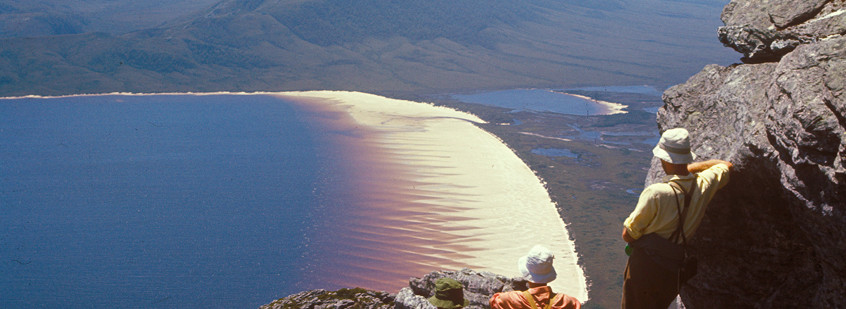The 2014 Environmental Film Festival Melbourne featured the new US epic DamNation. It has just replayed to a full house at Hobart’s State Theatre. If it shows near you, don’t miss it (or the 2015 EFFM)!
DamNation, presented by the ethical company Patagonia, is an exploration of the deconstruction of two high concrete dams on the Elwha River in Washington state, near Seattle, to enable the legendary salmon run of the Elwha to recover. 99 per cent of the salmon were eliminated when the dams obstructed the river in the 1920s. Now those dams are gone. The Snake River dams will be next.
The film shows campaigners eluding authorities to paint giant cracks on other dams which should be removed and, remarkably, the explosions or patient jack hammering of concrete as many more dams are removed from American rivers with the consequent return of life to long-flooded valleys. In Maine a public subscription of $24 million has bought three dams for deconstruction from the Penobscot River.
One of the most astonishing scenes in DamNation is the archival footage of a naked archeologist high up on the wall of Glen Canyon before this remarkable place, upriver of the Grand Canyon and its American Indian paintings, homes (mysteriously abandoned in 1300) and pottery were obliterated in the mid-1900s by the infamous Glen Canyon Dam. The contemporary interview with this feisty woman is riveting, and very funny given the tragic circumstances in which she had to work half a century ago.
No Australian dams tragedy, and there are quite a few, is like the obliteration of Tasmania’s Lake Pedder by three small concrete or rock-fill dams in 1972. The total destruction of the Lake Pedder National Park caused the first great national environmental furore.
Just yesterday (28 November) I met up with Barbara Ditcham, now in her nineties, at a Hobart shopping centre. Mrs Ditcham is the sister of the fabulous Lake Pedder campaigner Brenda Hean who, along with pilot Max Price, disappeared on a flight from Hobart to sky-write “Save Lake Pedder” over Canberra in 1972. The conjecture that their plane was interfered with and that they were murdered has never been quashed.
Now the Lake Pedder Restoration Committee is working to have the flooding of the lake and its famous pink sandy beach, 300 metres high between the Frankland Range and the peaks of the Coronets, reversed. Every day that passes sees this prospect becoming more sensible and realistic.
These days the tiddle of electricity generated from the waters impounded over Lake Pedder goes up the Bass Strait cable to help meet peak load demand for Melbourne breakfasts and dinners. It would be readily replaced by a modern solar power station in Victoria or a modest fair dinkum energy efficiency program.
Two decades ago, federal backbencher Tony Abbott recognised the original Lake Pedder as an international treasure and called for it to be restored (The Australian, 9 January 1995). Mr Abbott wrote: “Draining Lake Pedder may be good politics as well as good sense. Distaste for extreme green demands is no reason to reject sensible parts of their agenda… a federal government could commission a definitive cost-benefit study and, given a favourable result, to fund the restoration as an important national project. Tasmanians may be hard to convince, but that’s no reason not to try.”
Here’s one Tasmanian, amongst many, who won’t be hard to convince. How exciting is the prospect: now that Mr Abbott is Prime Minister the dream of recovering Lake Pedder has taken a giant step towards realisation – hasn’t it?


